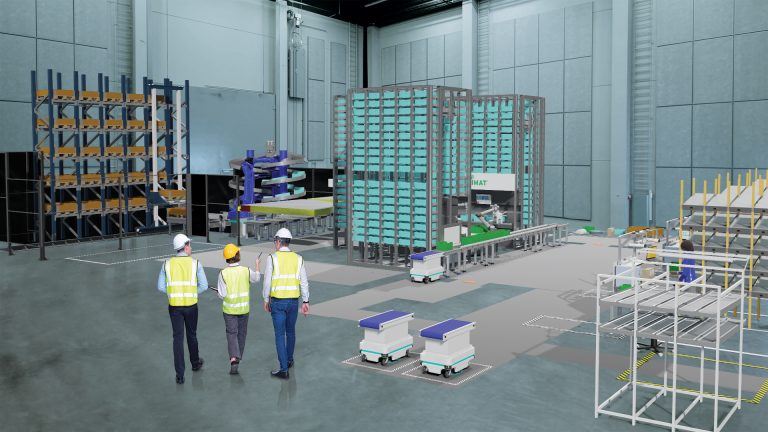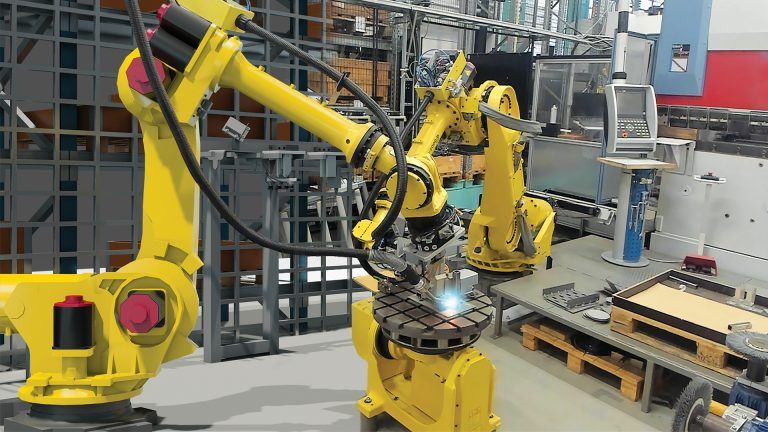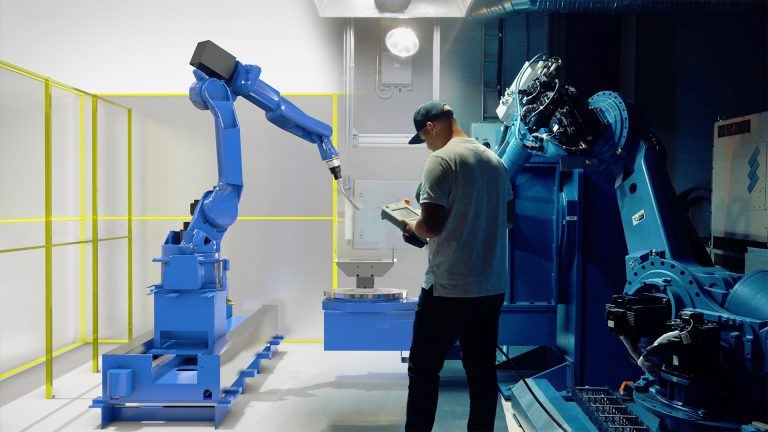Trends in Automotive Manufacturing in 2022 and Beyond
Let’s explore four major trends impacting automotive manufacturing.

If predictions are accurate, a decade from now cars and trucks will be very different from the ones produced today. Powertrains are changing and vehicles will be “smarter”, perhaps capable of operating without human input. There might be far more shared usage and less ownership, or perhaps not, it depends which experts you follow, while Asian automobile markets will eclipse those in Europe and North America.
For vehicle manufacturers, the OEMs, and their suppliers, the Tier 1 manufacturers and even the Tier 2’s, this change brings uncertainty and risk. Assembly and manufacturing facilities are expected to last decades. Equipment is purchased on the assumption it will be utilized for 10 years or more, yet model lifecycles are accelerating and fundamental shifts in vehicle design are even now underway. How then can machinery and production lines be specified and purchased for an uncertain future?
Visual Components doesn’t have the answer. What we offer instead are tools to help OEMs, Tier 1 and 2 manufacturers, and their machine builders and integrators determine what the answers might be.
Our simulation tools give users these capabilities. Later we’ll explore ways in which they contribute to identifying optimal manufacturing layouts and equipment. First though, is an overview of four major trends impacting automotive manufacturing. These are:
- Electrification and Platforms
- Connectivity and Autonomy
- The IIoT
- Cost management
Electrification and Platforms
Driven by government emissions reduction goals and pressure from some consumers, the industry has embarked on a process of electrification. While in the short term hybrids may come to dominate it seems clear that light vehicles will in time become purely electric. Electric vehicle (EV) manufacturing seems certain to impact both OEM assembly plants and the Tier 1 and 2 suppliers.
Battery manufacturing will become a large scale worldwide with the growth of Giga factories. At the same time, new companies are entering the market producing only platforms for EV’s for other traditional manufacturers to use. This will be speeding up the trend of local manufacturing – small manufacturing hubs based on a standardized agile manufacturing principle which can be replicated multiple times in multiple locations to sell to the local area’s reducing many of the costs associated with logistical transportation and plant size and scale.
These will bring dramatic changes. Engine assembly plants, and the supply chains that support them, will shrink or even disappear. Vehicle assembly will change dramatically with fewer components and subassemblies, and already we see the OEMs investing in battery and motor manufacturing.
Connectivity and Autonomy
Connectivity is impacting vehicles in many ways. At the same time as drivers are increasingly expecting the same internet connectivity in their cars that they have at home, the automotive industry is heading in the direction of having each vehicle with a standard software download and then the configurable items can be added at any time during the ownership of the vehicle using the connectivity through WIFI or 5G.
The data gathered via constant connectivity brings many possibilities to manufacturers to improve the customer experience and start new revenue streams i.e improving the vehicle design, maintenance, services, performance, and suggesting new, personalized services and applications according to the owners driving habits. This is also one of the reasons why big tech companies are interested in-vehicle connectivity.
Connectivity will also enable vehicle-to-vehicle (V2V) and vehicle-to-infrastructure (V2I) communications that will reduce accidents and improve traffic flows in increasingly congested cities.
Regarding autonomy, so far the challenge of developing vehicles that can navigate their way through unpredictable environments has proved harder than expected. With notable exceptions, many manufacturers and developers appear to believe the answer lies in the combination of cameras and LIDAR with artificial intelligence (AI). Advanced Driver Assistance Systems (ADAS) like automatic braking are proving popular with consumers, but the first applications of truly autonomous driving capabilities may be elsewhere. Long haul trucking, delivery services and perhaps also local transportation shuttle services may well be areas where a business case exists.
The IIoT
Considered a cornerstone of the 4th Industrial Revolution, the Industrial Internet of Things (IIoT) will let machine builders and integrators equip their lines with low-cost sensors that stream data to the cloud for analysis.
The data maps the performance of the operation right down to the component level. When this data is paired with digital twin it enables operations to build an accurate representation of the process to aid problem resolution, continuous improvement, remote visualization, flexible planning and change management.
As with the vehicles they produce manufacturers are looking for more smart, agile multi-configurable solutions to more align the autonomy and efficiency of the day-to-day with future change, minimizing disruption and cost whilst maximizing asset output potential.
Cost and Change Management
Two components of cost that manufacturers are focusing on more closely are asset utilization and warranty costs.
Asset utilization matters because vehicle assembly is tremendously capital-intensive, as is much of the sub-system and component manufacturing. Maximizing ROI requires high utilization of production lines and machining equipment, a practice some describe as, “sweating the assets.” This brings about an ever higher focus on performance measures like OEE along with laser-sharp attention to waste and material yields.
Achieving performance improvements requires data on what’s happening, minute-to-minute. Accordingly, equipment is being instrumented with cameras and other sensors to monitor and record production. In parallel, track-and-trace technologies that build a complete history of every part used in every vehicle support root cause analysis in case of field failure and warranty claims.
Implications for Automotive Manufacturing
Clearly, automobiles are changing, are so too are how they and their components are manufactured. The companies in this industry who can best prepare for this will also be those to profit most. So this prompts the question: what challenges do they need to explore and address? Arguably, the top three from a manufacturing perspective are:
- Building-in manufacturing flexibility for changing volumes and new features
- Raising equipment utilization and reducing waste
- Integrating new machinery and lines with older equipment in facilities that may be decades old
Since the first moving assembly line, the industry has focused initially on mechanization and then automation to minimize labor costs and standardize output. Such dedicated or “hard” automation is often capable of high production volumes but usually lacks flexibility. Any new product feature requires extensive retooling, which necessitates taking the line or machine out of service for an extended period.
The way around this is through robotics. These are quickly reprogrammed to handle changes in the product being assembled. Their limitation however is speed: robotic manufacturing is rarely as fast as a dedicated transfer line. In addition, a sophisticated robotic system can cost more than dedicated equipment.
This requires manufacturers to decide how much flexibility they want and can afford. Hybrid approaches may be appropriate in some circumstances although uncertainty regarding the content of future vehicles makes this an increasingly risky and difficult decision.
The high capital cost of manufacturing equipment makes it imperative to maximize utilization. A key tool in this is maintenance that prevents unplanned stoppages. However, without accurate data, there’s a risk of doing more maintenance than is needed, yet also doing the wrong maintenance.
A solution being adopted by growing numbers of manufacturers and machine builders and integrators is predictive maintenance. This is where IIoT sensors send data on temperatures, fluid levels, viscosities, vibration, and other indicators of machine condition up to the cloud. Here it’s analyzed to generate recommendations for maintenance work that can be performed when time permits.
Another aspect of this is remote access to machinery. Rather than spending time and money on visiting a facility, an integrator can access it remotely for diagnostics and even upgrade software.
Simulate for optimizing the future
Few manufacturers have the luxury of laying out a new facility from scratch. Instead, the machinery and lines for new equipment must be integrated into existing spaces and must often work with older machinery. This creates a host of challenges for layout and for balancing/optimizing throughput. Despite extensive use of CAD and digitization, it remains challenging to get everything right in a digital environment.
With so many possible configurations and layouts, a thorough evaluation of each demands more time than is available. At the same time not evaluating every option, or studying just a few, means a very real risk that the solution will be suboptimal.
Once an optimal approach has been determined it must be “sold” to decision-makers. Spreadsheets and charts lack impact and can overwhelm with numbers. Plus, it’s difficult to show an evaluation of more than a few alternatives and responding to “what if” questions is challenging to say the least.
The way to deal with these issues is to use 3D simulation.
3D simulation enables the creation of a digital twin of the factory, line, or machine. This twin can then be used to evaluate the impact of changes on production flow, identify bottlenecks, and determine where changes will have the greatest impact.
A digital twin is also a tool for driving data acquisition efforts for the maintenance and increased utilization. It can reveal where instrumentation will yield the greatest improvement or return.
The rate of change in the automotive industry will increase due to technological changes and environmental drivers resulting in the need for manufacturers at all levels OEM’s, tier 1’s & tier 2’s to facilitate the change in manufacturing processes & techniques. The utilization of digitization tools such as simulation, digital twinning, and virtual commissioning provides the opportunity to visualize and validate current and future solutions reducing the cost of assessment, implementation, and utilization throughout the change journey.
Steven Robbie, Operations Director – PR automation.
Simulation is a tool for evaluating alternatives. Balancing the competing goals of cost and flexibility involves many choices: simulation permits the construction of an unlimited number of models. Each can be fed with the same production schedules and challenges, and the performance of each is evaluated against the capital cost involved.
The simulation also helps with communicating proposed solutions. Observing workflows is more persuasive than viewing charts and spreadsheets and does a better job of facilitating understanding. For added impact, use a VR headset to immerse the viewer in the digital twin of the proposed line!
Further reading

The future of automated manufacturing (and why humans still matter)
Automation in manufacturing has been evolving for decades, but its true impact isn’t in replacing people, it’s about making them more capable. We spoke with Mika Anttila, one of Visual...

Understanding digital twins in manufacturing
Digital twins go far beyond static models or simulations. They bridge the gap between virtual and physical systems, offering real-time insights and control. But with so many definitions floating around,...

Tackling the manufacturing skills shortage with simulation and robot offline programming
The manufacturing industry is grappling with a significant skills shortage, exacerbated by the pandemic and an aging workforce. According to The Manufacturing Institute, 78% of companies are concerned about this...